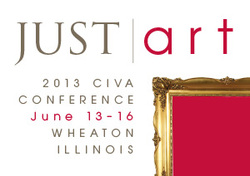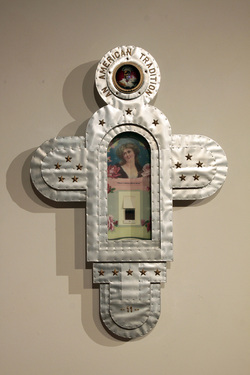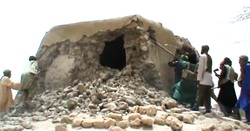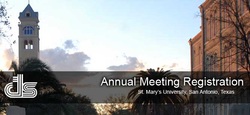|
From time to time, when I have time, I try to post articles and thoughts related to religion and the arts, and specifically Christian theology and the arts.
Here are a few articles that I've recently run into: Lucifer, Patron of the Arts This is an interesting article on the recent movement by the Catholic Church to venture directly into the art world. As the author implies, as a means to "lure" (my nice word choice given the title) lapsed Catholics back to the church via their interest in arts. What I found most interesting in the article was her Protestant utilitarian sentiment stating, "The archdiocese plays art patron on the downtown scene while parishes are shrinking, schools and churches closing". She takes up that old chestnut of Protestant critique against the excesses of the Catholic church suggesting that it should be used for missions etc. And perhaps it should. However, my artistic sensibilities are excited about the idea. Sure, approaching the wealthy lapsed Catholics through art patronage might be well down the slippery slope, but I still find it exciting to see the church catholic engaging the arts in a new way. 5 Ways the Church Can Make Great Art Again Overall, this is a pretty nice little article put out by Relevant Magazine. While #1 falls prey to the typical Modern romantic notion of the artist, the rest are certainly on track to address some of the surface issues. There are deeper issues of cultural education, sacramentality, consumerism, and entertainment at work in this discussion not mentioned. Can We Enjoy Good Art from Morally Questionable Artists? This is another old question from my Evangelical background and obviously it is still alive and well in cultural consumption. Do we, in viewing films, art and listening to music give consent to the actions of the performers, artists, directors etc? Perhaps we do well to reduce this question to the absurd...Do you give consent to the actions of your mechanic or checker at the grocery store when you shop there? The article raises the same question about Yoder's theology (and while not mentioned you could add Paul Tillich to this list) because of his questionable actions toward women. Do these actions discount their brilliant work? Do the actions highlight the distinction between the ideal and the actual in their life? Certainly, we all, whether Christian or not, should be sensitive in their media consumption, but my fear is that we as Christians are too fricken reactionary from our perceived moral high ground. Thoughtfully engage the work...always. What Can Artists Teach the Church? Alyssa Wilkinson reflects on her MFA in Writing experience and offers 3 ways artists might help the church. What is interesting here is that she focuses not on the artistic product but the process. Artists are masters of failing well. We all write, paint, play failures and this process of getting back up and trying again is an important spiritual virtue for the church. She also thoughtfully explores the ideas of Practice as Formation and Bodily Knowing.
0 Comments
Our small group has been studying the Gospel of Luke for the past 6 months or so and we continue to return to Luke 4:16-21 as a hermeneutical lens for understanding Luke’s perspective of Jesus. The passage states, “When he came to Nazareth, where he had been brought up, he went to the synagogue on the sabbath day, as was his custom. He stood up to read, 17 and the scroll of the prophet Isaiah was given to him. He unrolled the scroll and found the place where it was written: 18 "The Spirit of the Lord is upon me, because he has anointed me to bring good news to the poor. He has sent me to proclaim release to the captives and recovery of sight to the blind, to let the oppressed go free, 19 to proclaim the year of the Lord's favor." 20 And he rolled up the scroll, gave it back to the attendant, and sat down. The eyes of all in the synagogue were fixed on him. 21 Then he began to say to them, "Today this scripture has been fulfilled in your hearing."
The scroll was open to Isaiah 61 which should be read a fuller understanding for this context but Jesus’ own words suffice as a summary. Verse 19a of the Luke passage or 2a of Isaiah 61 mention the “year of the Lord’s favor” which points to the Year of Jubilee in Leviticus 25 where all property shall be returned to its rightful owners and debts are forgiven. With that in the back of my mind, my recent viewing radically changed my perception of Tyler Durden. Kelton Cobb, in The Blackwell Guide to Popular Culture states that Jack apprentices Tyler’s in an “ad hoc twelve-step program that Tyler devises to free Jack from his bondage to the dominant paradigm of consumerism” (p. 11). I began to wonder, is Tyler a sort of Christ figure, albeit a very dark one? Much of what the Lukan passage suggest and recurs throughout the Gospel is liberation from illness, oppression and the structures of society. Tyler is trying to liberate Jack and subsequently the rest of the men (and also the participational viewer) from the burden of branded identities and consumption. Tyler whispers to Jack while he is on the phone with the police, “Tell him the liberator who destroyed my property has realigned my perception.” Another telling scene is in the basement of Lou’s bar or tavern. Lou enters and proceeds to pummel Tyler. Tyler willingly accepts this beating for the sake of others. Tyler motions to Jack to stay on the sidelines because his entry would derail his purposes of obtaining this venue on behalf of the greater whole. He, like the Space Monkeys later sacrifice themselves so that fledgling community of Fight Club may go on. Another telling scene takes place in the back of a convenience store…the epitome of unnecessary consumption. With the glow of soda machines in the background the store clerk, Raymond K. Hessel is hauled out at gunpoint and made to kneel on the ground. Tyler sifts through his wallet finding an expired community college I.D. card he asks what he studied. The clerk, fearing for his life manages to dribble out barely understandable words. At one time, he had wanted to be a veterinarian and having become overwhelmed by the work involved he left his dreams behind to work in a life-sapping environment of consumption. Tyler takes the man’s license and says that he will check in on him in 6 weeks and will kill him if he is not on the way towards becoming a veterinarian. Afterwards Tyler says, “Tomorrow will be the most beautiful day in Raymond K. Hessel’s life.” Raymond is awoken from the slumber of self in a society bent on selfish consumption and freed to pursue his dreams. In fact, his life (both metaphorically and literally) depend upon it. In a later scene, we see the back of a door covered with stolen drivers licenses signifying that this was not a random act. Rather they had encountered many attempting to liberate them from consumption towards a greater good. Another central question that should be asked is the nature of the violence. To what end is the violence. Is there meaning in or redemption from the violence? In these particular scenes it would seem that there is. The cross, the supreme act of violence in the Christian tradition becomes the central motif for Paul and the means of our salvation. Here too the violence is the necessary method of freeing others from the oppression of social structures. Raymond K. Hessel and all the others represented by their drivers licenses have been in someway freed. The Space Monkey’s too have been freed from their miserable lives to find meaning in liberating others. And we as the viewer also are to find liberation by participation in the story. Tyler may be thought of a sort of Christ-figure insofar as he gives sight to the blind (awakens slumbering culture to the effects of consumerism) and then heals them by giving them a new identity, and brings good news to the poor (both literally poor and of spirit), and frees them from the burden. The clincher for this Christological lens is the year of the Lord’s favor…the Year of Jubilee. Tyler, and project Mayhem are bent on bringing down the credit card industry to level the economic playing field. By destroying this harmful and oppressive banking practice Tyler initiates what to many would be the Year of Jubilee. And yet, we must consider (as one of my students pointed out) not only what Tyler is liberating them from, but to what/where are they going? And this is where the Christ-figure lens would seem to fail. Robert Bellah points out a fantastic irony in Habits of the Heart by saying, “just where we think we are most free (we’ve cast off these oppressive structures and philosophies), we are most coerced by the dominant beliefs of our own culture. For it is a powerful cultural fiction that we not only can, but must, make up our deepest beliefs in the isolation of our private selves” (p. 65). Radical individuals fail to see that they cast off one set of traditions for another set. Thus Tyler leads them from the oppressions of one tradition (namely consumption) to another (namely violence and anarchism). If this is correct and the film finally does not endorse the violence it portrays, Tyler can simultaneously be thought of as an anti-Christ leading his followers into another form of oppression.  This past weekend in church, one of the readings was Romans 8.12-25. In it, I saw something new that I had never seen before even though it is a passage I have read and heard countless times during my life. It may even be one of those that I might even be able to recite part of from memory. It is curious to me how these things happen. Now Christians explain this as the Holy Spirit illuminating the scriptures. Which I do believe happens, however anyone who spends enough time with a text has the possibility to read it with “new eyes”. All those things that we encounter in our lives between the readings come into play and activate in our most recent reading to suggest the possibility of new depths of or alternate meanings. Whatever it is, I appreciate the new ideas and possibilities. So here is the passage: 12So then, brothers and sisters, we are debtors, not to the flesh, to live according to the flesh— 13for if you live according to the flesh, you will die; but if by the Spirit you put to death the deeds of the body, you will live. 14For all who are led by the Spirit of God are children of God. 15For you did not receive a spirit of slavery to fall back into fear, but you have received a spirit of adoption. When we cry, “Abba! Father!” 16it is that very Spirit bearing witness with our spirit that we are children of God, 17and if children, then heirs, heirs of God and joint heirs with Christ—if, in fact, we suffer with him so that we may also be glorified with him. 18I consider that the sufferings of this present time are not worth comparing with the glory about to be revealed to us. 19For the creation waits with eager longing for the revealing of the children of God; 20for the creation was subjected to futility, not of its own will but by the will of the one who subjected it, in hope 21that the creation itself will be set free from its bondage to decay and will obtain the freedom of the glory of the children of God. 22We know that the whole creation has been groaning in labor pains until now; 23and not only the creation, but we ourselves, who have the first fruits of the Spirit, groan inwardly while we wait for adoption, the redemption of our bodies. 24For in hope we were saved. Now hope that is seen is not hope. For who hopes for what is seen? 25But if we hope for what we do not see, we wait for it with patience. I think, looking back on it now, I likely read this passage in a way was about human struggles and the hope that comes from faith in spite of current circumstances. Now, without looking, Paul is writing to encourage and teach those living in Rome dealing with a pretty crappy situation struggling under persecution. This is all pretty standard. What was new for me is how creation is bound up with humanity in this struggle. Look at verse 19-23 again. Creation awaits salvation too! It languishes awaiting its freedom. Again, looking back on it, that I think I conflated humanity as part of creation, which it is, but verse 23 articulates an important rhetorical distinction (23and not only the creation, but we ourselves). This distinction that Paul sets between humanity and creation is an important one. We see, that creation suffers awaiting the same freedom from bondage that humanity awaits. This was an unbelievable thought. Over the recent years, with my interest in place and shifting theological emphases, I’ve come to think more about the relationship between humanity and the earth very differently. Often, for a variety of long held philosophical reasons firmly rooted in Protestant thought, the physical is diminished in favor of the spiritual. The logic goes that since “we” will fly away from this physical earth, it is of no real lasting significance. Tragically, the position of caretaker from Genesis becomes one of dominance and misuse rendering it a disposable reality to be mined for all its worth to fuel our economies. As I think about this further, this action only amplifies the groaning. Perhaps what has allowed this idea to emerge is my recent time in the oil fields of North Dakota. At the beginning of this month, I spent 2 solid days, driving through some of the most beautiful landscape of North Dakota which has now become a sprawling oil field. Land is being drastically reshaped, gouged, drilled, drug, and about any other manner of soil movement you might consider. I cannot help but to see the groaning of the earth around me when I drive out there. While the Psalms retell the laments of those who cried out, “How long?” I fear this is the cry of the earth as well?  With the NABPR and CTS conference in the books it is time to transition to my project for the CIVA Just Art conference at Wheaton. In just over a week I will be heading out to join other scholars, artists, ministry professionals to explore the roles of faith, justice and the arts. It looks to be a great conference with exhibitions, quality presenters and presentations. As I often do, I tend to bite off more than I can realistically chew. I love conferences in theory (and in actuality as well once my responsibilities for it are over). I hate passing up opportunities to present my research so when the call for papers came I waited until the last moment to throw my proposal out there. With the exhibition last week and Maymester the two previous weeks, the paper has sat dormant for some time. Thankfully I did have some time to work on it at the CTS conference while I was attending to the gallery. My paper will explore the thought of Johann Baptist Metz, a German Catholic political theologian and use his thoughts to engage the work of recent Guggenheim recipient Daniel Heyman. The papers (for good and ill) are only 15 minutes...which actually makes it quite a bit harder to layout Metz' project and make coherent connections to Heyman. But it is exciting to actually be writing this paper that came to mind last year at the CTS conference in San Antonio. In the coming days, I will post briefly about my progress and overall thoughts on their work. Stay tuned...  Formation Matters takes its name from a simple, but evocative play on words. If taken literally, the phrase suggests the relevant topics or concerns relating to formation. Rhetorically however, the phrase implies the overall importance of formation. In a third turn of the phrase, it also hints at the substance or physicality of the artists’ creations through which viewers engage the initial two turns of the phrase.* This plurality of meaning allows for the same in the directions of work chosen for the exhibit. While all the artwork in some way deals with memory and tradition, it also embodies a variety of conceptual approaches. Both Donovan Widmer and Patrick Luber investigate the dynamic and formative relationships between religion and culture. Whereas Katelyn Reiter and Mary Kocal explore the power of family narratives within their own lives. My own work, and that of Cherith Lundin, raises questions about the ambiguities and possible loss of traditions. Micah Bloom’s recent work on the 2011 Minot flood haunts the space between these two positions as a metaphor by regarding his childhood formation and the passing of the paper book. Additionally, while all artists work from particular traditions and influences, be it media or school, John Kaericher’s work often makes explicit visual ties to his mentors. In these ways, the exhibit offers another voice into the conference conversations. Building around the theme of Teaching Theology and Handing on the Faith, the exhibition is rooted in the belief that the visual arts can be remarkable catalysts within these conversations, as well as profound symbols and mediations of the Divine. While the church has historically drawn upon the devotional and didactic potential of art, the engagement and contemplation of contemporary art allows divergent points of affirmation and provocation of its traditions. *The beginning is a modification of Liz Well's introduction to her wonderful text, Land Matters A theology of fashion? Why bother with such a trivial subject you ask?
Perhaps its not all that trivial. Perhaps, if your response is similar to the one above, we do well to consider why it is seen as trivial. During my trip down to Iowa in October to speak at Dordt's Christian Evasion of Popular Culture conference, I bumped into Bob Covolo who is doing work at Fuller Seminary on the topic of fashion. Unfortunately I was so exhausted after my paper I did not have an opportunity to hear his paper. After reading an article someone posted on the new black dandies in higher education, I decided to look Bob up on the interwebs and found this great article on Cardus. Bob's article surveys a variety of approaches toward fashion and encourages the church to engage in thicker readings and engagements with fashion. Fashion has always been a sort of guilty pleasure for me. As an artist, clothing has always been another form of expression for me, but has always been subverted by the typical sorts of critiques that Bob alludes to coming from the church. I suspect that fashion, like the visuals arts, are often seen as trivial, and utilitarian in nature (one for covering the body, the other for Evangelism). I think Bob is on track with the breadth of questions that fashion raises for church. But, I keep coming back to...what seems to me is a avoidance and escapist sense of materiality (including the human body itself). Perhaps its just remnants of my own Dordt paper coming out, but the whole Gnostic escapism thing really could resonate with why the church devalues things like fashion and the arts....they are fleeting, of this world, and distract us from our spiritual duties, until we can leave this place behind. If we dont take bodies seriously, how much less of an emphasis do we place on those things we put on our bodies and around us in our homes and such? But that being said, there are resonances (at least in my mind) between our fields. However, I suspect that Bob is up against even tougher critics that rely upon biblical prooftexting Waiting. It seems this time of year is filled with it. We wait in longer than normal lines at stores, at stoplights, gas pumps, and movie theatres. Some wait to hear about jobs, other about tests (both academic and medical). We anxiously await seeing friends and family over the holidays. Children and adults wait, patiently and some impatiently for their presents.
But we are also entering Advent; the first season of the liturgical year. A season designed specifically for waiting and anticipation. We wait for the comings of God. Yes…plural “comings.” We are certainly well acquainted with celebrating the historical birth of Jesus. And rightly so, but the biblical readings of Advent, point us beyond the historical story, toward the future return of our Savior as well. As the first week’s reading from Luke 21 reminds us, “the day of redemption is drawing near.” Our longing and waiting to celebrate the birth of Christ needs also be the hope filled celebration of a promised particular future. In the meantime of anxiousness and waiting, we pray, “Come Lord Jesus.”  Read Story here. I hate stories like this. As someone who is deeply concerned about place, its role in peoples lives and beliefs, regardless of religion, this makes me deeply distressed. I suspect because I see these places not only in their religious and cultural sense, but also in an artistic, architectural, aesthetic sense as well. I simply do not understand the desire to destroy a work of art or religious site...regardless of religion. I do not know much about these sites, or how strictly they follow the legends, but their destruction will cause disorientation and confusion in their belief system...I suppose that is what Al-Qaida is after. Sad.  Take a look at this article and images. I am not sure how I feel about this. This photo is one of a number of religious statues remade into the forms of superheroes. I look at this with mixed emotions of humor and enjoyment, and then I turn and feel as if someone has stolen and defaced our sacred symbols. This fickleness in my heart and mind comes from my dual vocation as an artist and theologian. I appreciate the wit, I appreciate the humor. I appreciate the conceptual aspects. But there is something within me that still bothers me. But again I am suprised by the some of the thoughtful comments on the page drawing the ties between superheroes and religious figures. This causes me to ask, where do we draw the line in what is blasphemous? I recently picked up Brent Plate's Blasphemy: Art that Offends. Like most of my amazing book collection, I have not had time to pick it up and work through it. But I hope that when I do, it will help me work through these ideas in an articulate way.  Last week I had the priveledge to attend the joint meetings of the College Theology Society and the National Association of Baptist Professors of Religion. I believe this was my 5th meeting that I have attended. One week ago today I was skimming through my paper in preparation to present it at 9:30. This was also my first real trip to Texas (clipping the corner en route to New Mexico in 8th grade didn't count). It was somewhere in the low 40's in ND when I left at 7am but was around 90 when I got to San Antonio at noon. I will say that I doubt Texas will ever be for me. Between the rattlesnakes and the heat, and other crawling things, it makes me thankful to be a resident of the upper midwest where the winter prohibits much of those forms of life. That aside, it was a nice visit and a great conference. Between AAR and CTS meetings, I have now attended enough conferences to be at the point where I no longer feel guilty about skipping sessions. I have sat through enough sessions that were either or both outside of my knowledge range or just over my head that it really was a waste of my time. I now take advantage of naps. I was thankful that my paper was given the first session slot, because I could sit back and enjoy the rest of the conference. I have been on the last Sunday session and not only is attendence usually down as people are already heading home but the anxiety of pushes me to noodle my paper right up until I present. My paper was entitled "Jesus Gave Me This: Deciphering the Overlap of Spiritual Language in the Creative Process" The paper largely grew out of my experiences with a Christian artist group who's members would speak about the source of their creative idea with theological language suggesting both personal revelation and inspiration. They used these terms in a variety of ways from meaning a general urge to create but also that God spoke to them and gave them the creative idea and even created the work through them. The paper then goes on to explore a variety of issues such claims make for both theology and the arts. Since I have returned I have been working on edits to the paper so it can be submitted for consideration in the conferences annual volume. While it is nice to be asked to submit the paper, the quality of papers suggests that it is not likely to be accepted. Oh well...the struggles of editing are always good practice for developing ones writing. My experiences of conferences are usually a mixed bag. I am often inspired by the work that is going on and how it relates to mine. But I often feel so intellectually inadequate among so many well educated people. Of course many of them are well along in their careers and have books and PhD's. It is about this time when I go back to my room to take a nap which usually rights the world again. The book publishers tables are always a highlight as are the socials and the meals out with friends that I get to see only at this conference. Some conferences can be stuffy and stiff, but this conference is always warm and welcoming. It is a great place to try out new stuff because people are affirming and encouraging, particularly for graduate students. If you looking for a conference, particularly if you are interested in either Baptist or Catholic theology or ecumenism, then CTS is a perfect conference to check out. And a plug for next year...its at Creighton in Omaha Nebraska. |
Ryan StanderArchives
January 2018
Categories
All
|

 RSS Feed
RSS Feed
